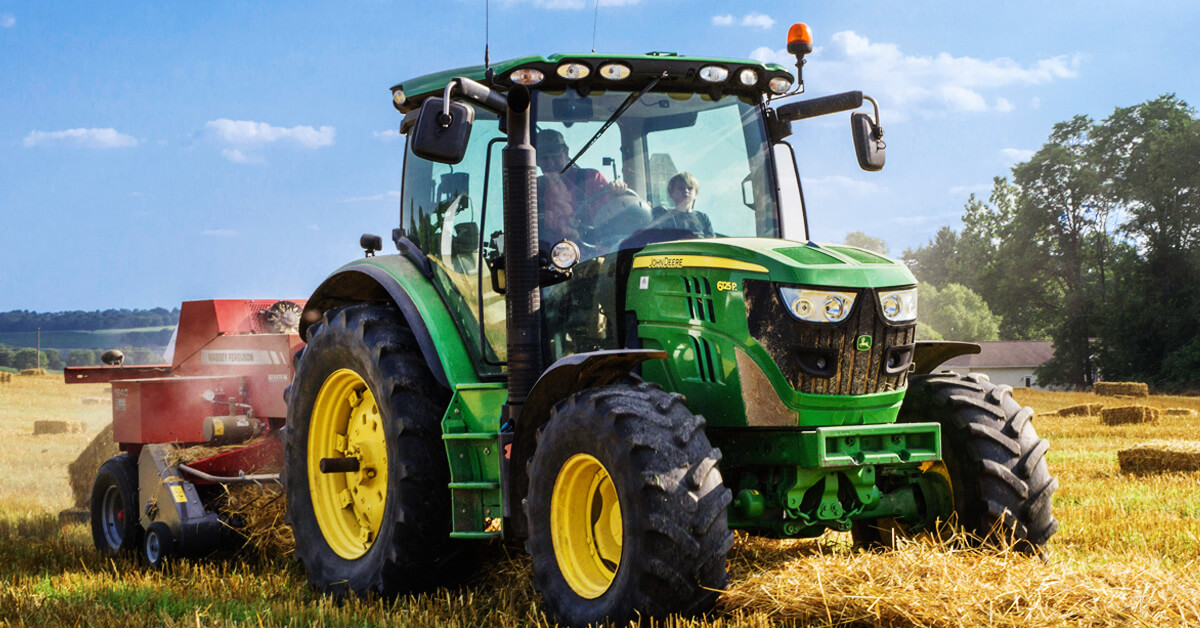The John Deere 4020 tractor stands as a legendary figure in the annals of agricultural machinery.
Introduced in the 1960s, this green workhorse quickly became synonymous with reliability and versatility, earning a cherished place in the hearts of farmers and agricultural professionals worldwide.
Even decades after its peak production, the 4020 remains a highly sought-after machine, celebrated not only for its historical significance but also for its robust engineering.
Below, we delve into the key technical parameters that defined the capabilities of this iconic tractor.
Powertrain
At the heart of the John Deere 4020 lay a powertrain designed for durability and performance, setting standards for its era:
Engine Type: Diesel engine, known for its robustness and fuel efficiency suitable for demanding farm work.
Displacement: Approximately 3.9 liters, providing a good balance between power and engine longevity.
Power Output: The power varied depending on the specific configuration and market, typically ranging from 85 horsepower to 105 horsepower. This range allowed it to tackle a wide variety of tasks.
Fuel Efficiency: Engineered for economical operation, enabling long hours of fieldwork with reasonable fuel consumption.
Transmission System
The transmission offered flexibility, allowing operators to match the tractor’s speed and power to the task at hand:
Transmission Type: Available in both mechanical and optional power shift configurations, offering different levels of control and convenience.
Gears: Common configurations included 8 forward and 4 reverse gears. Some versions also offered high and low range options, effectively doubling the number of usable speeds for greater versatility across different implements and ground conditions.
Power Take-Off (PTO) Speeds: Typically offered 540 rpm, with some models also providing a higher 1000 rpm option. This dual speed capability was crucial for operating a wide range of implements, from standard tillage equipment to higher-speed machinery like forage harvesters.
Weight and Dimensions
The 4020’s weight and size were carefully balanced to provide both stability under load and reasonable maneuverability:
Operating Weight
Approximately 3.2 metric tons (around 7,055 lbs), though this could vary slightly based on specific equipment and configuration.
Length: Roughly 4.2 meters (about 13.7 feet).
Width: Approximately 1.8 meters (about 6 feet).
Height: Around 2.5 meters (about 8.2 feet).
Other Key Technical Features
Operator Station
Early models featured an open operator station.
Later production runs introduced an optional enclosed cab, significantly improving operator comfort and protection from the elements, a notable advancement for the time.
Fuel Capacity
Typically around 60 liters (approximately 16 US gallons), allowing for extended operation without frequent refueling stops.
Hitch System
Equipped with a robust three-point hitch system, which became the industry standard.
This allowed for quick and secure attachment of a vast array of trailed and mounted implements, enhancing the tractor’s multifunctionality.
Legacy and Impact
The John Deere 4020 was more than just a tractor; it was a catalyst for modernizing agriculture.
Its combination of power, reliability, and versatility made advanced farming techniques more accessible.
It played a pivotal role in the mechanization of agriculture globally and remains a celebrated piece of machinery, frequently seen in working farms, collector’s fields, and agricultural museums as a testament to its enduring design and performance.
The engine of the John Deere 4020 tractor is a cornerstone of its enduring legacy, representing a blend of power, durability, and innovation for its time. Below is a detailed description of its engine specifications and design features:
Engine Type and Configuration
The John Deere 4020 is equipped with a robust diesel engine, which was considered a significant advancement in agricultural machinery during the 1960s.
This engine is a four-cylinder, inline configuration, providing a balanced combination of power and efficiency.
The inline design allowed for a more compact engine layout, which contributed to the overall versatility of the tractor.
Power Output
The engine delivers a power output ranging from 50 to 60 horsepower (hp), depending on the specific model variant.
This level of power was more than sufficient for the heavy-duty tasks common in agriculture at the time, such as plowing, tilling, and hauling.
The engine’s power output was achieved through a well-tuned combustion process, ensuring reliable performance even under demanding conditions.
Displacement and Compression Ratio
The engine displacement for the John Deere 4020 is approximately 3.9 liters (237 cubic inches).
This displacement, combined with a compression ratio of 16.5:1, contributed to the engine’s ability to generate high torque at lower RPMs.
This was particularly useful for tasks requiring sustained pulling power, such as operating heavy implements or pulling large loads.
Fuel System
The John Deere 4020 utilizes a direct injection fuel system, which was a relatively advanced feature for its era.
This system allowed for more efficient combustion, reducing fuel consumption and improving power delivery.
The direct injection system also minimized emissions, making the tractor more environmentally friendly compared to other engines of the time.
Cooling and Lubrication
The engine is equipped with an air-cooling system, which eliminated the need for a complex liquid cooling setup.
This not only simplified maintenance but also reduced the risk of coolant leaks, making the tractor more reliable in the field.
The lubrication system features a pressure-lubricated design, ensuring that all moving parts of the engine are adequately lubricated under heavy loads.
This design significantly contributed to the engine’s longevity and reduced wear over time.
Maintenance and Reliability
The John Deere 4020’s engine was designed with ease of maintenance in mind.
Key components, such as the oil filter canister, were easily accessible, allowing farmers to perform routine maintenance quickly.
The engine’s durability was further enhanced by its robust construction, using high-quality materials that could withstand the rigors of daily agricultural use.
This focus on reliability meant that the John Deere 4020 could operate for extended periods with minimal downtime.
Historical Significance
The engine of the John Deere 4020 played a pivotal role in the tractor’s success.
Its combination of power, efficiency, and reliability set a new standard for agricultural machinery in the 1960s.
Even today, the John Deere 4020 remains a favorite among collectors and enthusiasts, largely due to the exceptional performance of its engine.
The engine’s design and features continue to be studied and admired as a milestone in the history of agricultural technology.
In summary, the engine of the John Deere 4020 is a testament to the engineering prowess of its time.
Its powerful yet efficient performance, coupled with robust construction and ease of maintenance, made it an indispensable tool for farmers and a lasting symbol of agricultural innovation.
Conclusion
The John Deere 4020’s enduring legacy is built upon a foundation of solid technical specifications.
Its capable powertrain, flexible transmission, effective weight and dimensions, and modern features like the three-point hitch and optional cab cemented its status as a classic.
For anyone interested in agricultural history or reliable machinery, the technical prowess of the 4020 offers a fascinating glimpse into a pivotal era in farming technology.
Further exploration into specific model variations can reveal even more about the nuances of this remarkable machine.






Leave A Comment